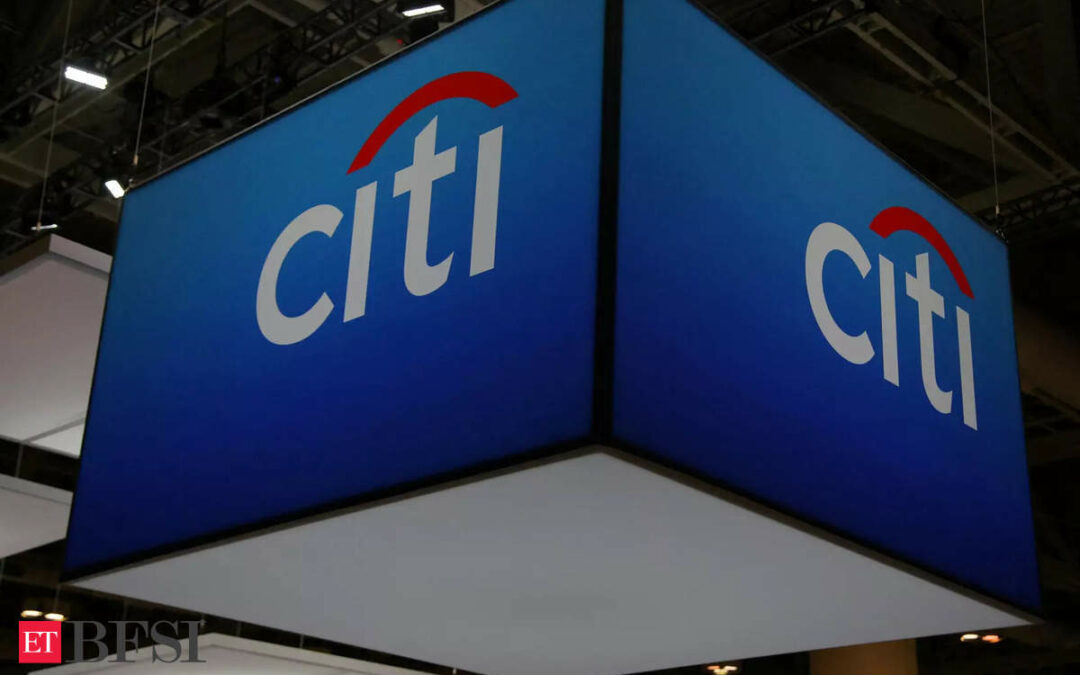Citigroup beat Wall Street expectations for second-quarter profit on Friday, boosted by a 60% jump in investment banking revenue and gains in its services division, but shares fell 2.9% amid investor worries about expenses and market share.
The third largest U.S. lender reported a profit of $1.52 per share in the three months ended June 30. That compares with analysts’ expectations of $1.39, according to LSEG data.
The results reflect Citi’s uphill climb as it tries to reach its shareholder returns target of 11% to 12%, from 7.2% in the second quarter, said Warren Kornfeld, senior vice president in the financial institutions group at Moody’s Ratings.
“The results again reflect the services sector’s strength. But Citi has challenges in broadening market share and reducing expenses in its other segments.”
The stronger results come two days after U.S. regulators fined Citi $136 million for making “insufficient progress” in fixing data management problems identified in 2020. Regulators also required the lender to demonstrate it was putting enough resources toward those efforts.
Citi had already booked the penalties and additional investments on the data work in the second quarter based on its own estimates of the costs.
The bank’s plan to allocate resources to regulatory fixes has not yet been agreed with regulators, and when it is, the details will become confidential supervisory information, Citi’s Chief Financial Officer Mark Mason said on a call with reporters.
In areas where regulatory work looks like it could face delays, Citi will determine root causes and decide whether more technology spending, additional applications or platform adjustments, or more employees are needed, Mason added.
Shares fell 3.3%, reversing premarket gains.
Citi had “a clean quarter … driven by stronger than expected trading revenues late in the quarter,” Oppenheimer analyst Chris Kotowski wrote in a note to clients. There was “relatively minor noise relating to various civil penalties and ongoing restructuring,” he added.
CEO Jane Fraser is carrying out a sweeping overhaul in an effort to improve the bank’s performance, cut costs and simplify its sprawling businesses. As part of the turnaround, Citi aims to shrink its workforce by 20,000 over the next two years.
Revenue in the second quarter came in at $20.1 billion, up 4% from a year earlier, buoyed by a $400 million gain from the conversion and partial sale of Visa stock in May.
Citi now breaks out earnings individually for its five businesses — services, markets, banking, U.S. personal banking and wealth, which were previously housed under broader divisions.
The new structure is part of Fraser’s efforts to cut bureaucracy and increase profits. Under it, the leaders of the segments report directly to the CEO.
Investment banking fees jumped 60% in the second quarter to $853 million. The surge comes as a prolonged industry-wide slump in deals finally shows signs of a meaningful recovery. The gains fueled a 38% climb in broader revenue for the banking division to $1.6 billion, which also includes corporate lending.
“We see continued strong debt issuance this quarter, good M&A, the IPO market has shown a glimpse of revival and the pipeline … is quite strong,” Mason said on the call.
“We expect the rate environment and financing markets to be accommodative … M&A will potentially play a larger role in the mix in the back half of the year.”
Citi hired JPMorgan Chase veteran Viswas Raghavan as head of banking earlier this year. Fraser has expressed high hopes for Raghavan, who is tasked with revitalizing the division catering to multinational corporations.
Services revenue increased 3% to $4.7 billion. The unit houses Citi’s treasury and trade solutions business, which the company touts as its crown jewel. The business had flat revenue this quarter, at $3.4 billion. It processes $5 trillion of payments a day for multinational corporations across 180 countries.
Fraser and other leaders highlighted their strategy for the services business at an investor day held at the bank’s New York headquarters last month.
Markets revenue climbed 6% to $5.1 billion, lifted by a 37% jump in equities trading revenue.
EXPENSES ON TOP OF GUIDANCE
Operating expenses fell 2% to $13.4 billion in the reported quarter as the bank saved money from the reorganization that simplified its structure.
But the lower operating expenses were offset by fines for failing to comply with regulatory punishments known as consent orders dating back to 2020, and investments for the remediation work.
Citi expects full-year expenses to be at the high end of its previously forecast range of $53.5 billion to $53.8 billion, excluding the regulatory fines, Mason said.
Rival JPMorgan Chase reported a rise in second-quarter profit on Friday, while Wells Fargo’s net income declined and it missed estimates for interest income.
Citi’s wealth management division, a key part of Fraser’s growth strategy, has yet to grow significantly, with revenue up 2% this quarter to $1.8 billion.
The lender’s U.S. personal banking revenue grew 6%, reaching $4.9 billion, mainly due to growth in branded cards.
TURNAROUND IN FOCUS
Analysts have called 2024 a transitional year for Citi as it becomes leaner under Fraser’s turnaround.
Investors have also cheered the efforts and rewarded Fraser with a 28% jump in the bank’s stock this year, far outperforming closest rivals JPMorgan and Bank of America, as well as the broader equity markets.
Still, Citi has recently faced other regulatory challenges, such as regulators considering its so-called living will, which details how it would be unwound in the event of bankruptcy, as “deficient.”










